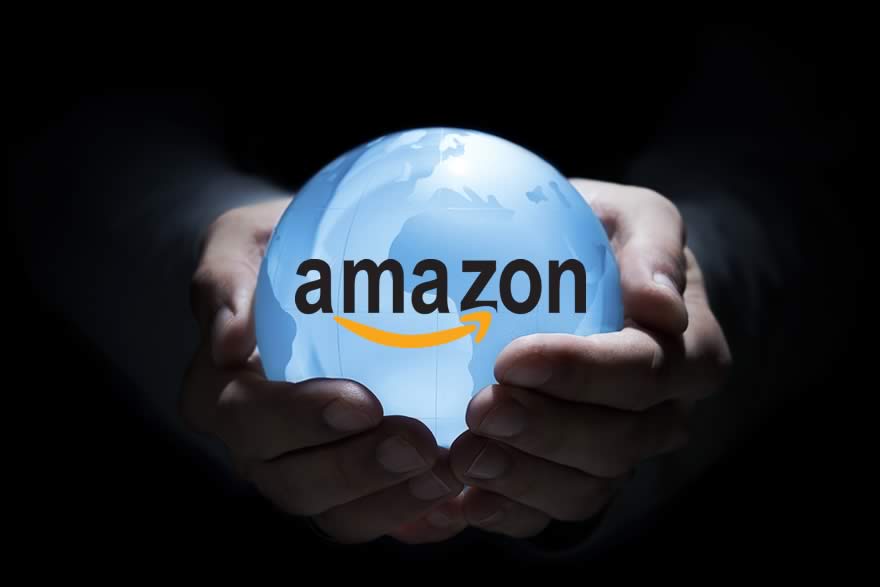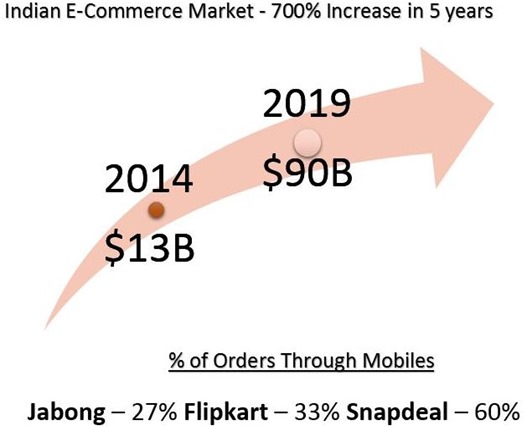Amazon’s reach has spread so far and wide across the United States that you’d be hard-pressed to find someone that doesn’t recognize the name. Kids today are more likely to say “where we buy stuff” than “the biggest river in the world” if they were asked the question “What is Amazon?”
Despite its astounding growth in the United States, however, Amazon still has massive growth potential. The only problem is, they are barely profitable, and have only shown steady profitability over the past year or so.
How Big is Amazon in the United States?
America’s largest online retailer made approximately $107 billion in sales last year. Not all of that is from its retail business, however. $7.88 billion of that came from their technology services, namely AWS or Amazon Web Services, the world’s top provider of cloud infrastructure services.
Of the remaining $99 billion or so, $63.7 billion came from North America retail sales and $35.4 billion from international sales. At $64 billion from two countries, you could say Amazon’s business is highly concentrated in one part of the world.
Despite that kind of sales volume, however, Amazon retail in North America continues to grow. In fact, the $63.7 billion itself was a 25% spurt from the year before. So it’s clear that Amazon still has massive potential in its home market.
But what about the international market. With a presence in 13 countries outside the U.S., why is Amazon still making only $35.4 billion in sales? More to the point, are they actually making any money as profit?
Profitability in the Domestic Market
In the United States, Amazon’s profit level in the second three-month period of 2016 stood at slightly under 4% – something they’ve been able to hold steady for the past year. Though that might not seem like much, it’s a huge achievement for a company that has been bleeding money since it was launched in 1999.
But Amazon U.S. retail operations are now relatively far more profitable than before, and some of that comes from the huge base of nearly 54 million U.S. members of Amazon Prime as well as savings they’ve made in their biggest expense item – shipping.
Now that their home market is finally profitable, can the same be said of international markets? Not by a long shot, unfortunately. The company has posted losses totaling $252 million in the last twelve months in the international retail segment.
Why is Only the U.S. Division Profitable?
The biggest reason for their profitability in North America (primarily the U.S.) is the size and scale they have achieved, as well as new business initiatives. Amazon Business, for example, is a relatively new service catering to the needs of other businesses. Shipping for bulk orders is obviously proportionately cheaper than it is for individual packages, so there’s a healthier margin for Amazon in this segment. In addition, this unit is built on Amazon’s Marketplace model that allows 30,000 third-party sellers to sell to over 400,000 businesses across America.
As such, the combination of high-margin segments, size, scale and their own assets in shipping and logistics have all contributed to finally making Amazon’s U.S. retail business consistently profitable.
Can They Do This Elsewhere?
The answer to this is definitely a yes, but it will take time. Until now Amazon has only made a big dent in one of the countries it has entered – India. It is now the No. 1 online retailer in the Indian sub-continent, toppling Flipkart from that position this year. They’ve been able to do this because of the huge investment they brought in to the country. But even India is barely profitable for Amazon. In order to become truly and consistently profitable in this market, Amazon will need to grow its revenue several times over.
How much do they have to grow? Well, judging by their scale and size in the United States, Amazon will have to grow several times over in India before it’s able to stake a claim to perpetual profitability.
“Amazon expects India to overtake Japan, Germany and the UK to become its largest overseas market, besides becoming the quickest to reach $10 billion in gross merchandise value” – Diego Piacentini, senior vice-president for international business
But remember, $10 billion in gross merchandise value does not mean the same thing as $10 billion in revenues. That’s because Amazon India primarily operates as a marketplace offering a sales platform where sellers and buyers can meet and transact, and the company keeps a margin on goods sold. However, the majority of sellers tend to use Amazon’s warehousing and shipping infrastructure in this market because of the convenience, and this is more money out of pocket for Amazon.
So, in addition to being a marketplace “broker” with narrow margins, Amazon is forced to spend billions on building out its warehousing and shipping networks across the country. The company has already invested $2 billion, and we expect that to go up to $5 billion over the next few years.
The problem is, the entire e-commerce industry in India is only estimated at around less than $35 billion. Some estimates show that by 2019 the entire e-commerce retail market in India will reach as much as $90 billion.
Amazon has always been ready to sacrifice profitability for growth, but now that they’ve had a taste of it in the United States, they will be clamoring for more. And they’ll want it faster than before.
But essentially, this is the formula Amazon will need to follow in every country it enters. Last week the company announced a $550 million investment in Italy, which is essentially a bet on the government’s plan to invigorate e-commerce in the country.
So back to the question of whether they can be profitable as a retail business elsewhere in the world, the answer is a yes but it is not an easy yes. The task is hard and the investment will be high.
That said, this is now one of the most valuable companies in the world to invest in. Despite having revenues much smaller than giants like Wal-Mart, their growth path for the future is all but guaranteed.
Thanks for reading our work! If you’re reading this on Apple News, please favorite the 1RedDrop channel (next to our logo) to add us to your news feed, or Like our page on Facebook. Please bookmark our site for more insightful articles on current and future technologies that are changing our lives.




